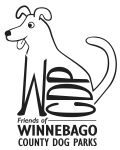 A Christmas tree is a source of joy during the holidays but can pose dangerous hazards to your dog
A Christmas tree is a source of joy during the holidays but can pose dangerous hazards to your dog
Next to you, your dog may think that your Christmas tree is her best friend –at least during the holidays. Most dogs are instinctively drawn to its inviting smell and the allure of gift boxes, wrappings, lights and ornaments. But beware; her natural curiosity can place her at risk for serious injury or worse.
Hazard Awareness and Prevention
Age, temperament, and your dog’s energy level all play a role in how much mischief she might find herself in. Even the most well behaved canine can succumb to the temptation of a Christmas tree and its trimmings. Short of 24/7 supervision, your next best defense to ensure her safety is to take precautions that minimize or eliminate the risks. :
- Needles: Don’t let her chew or swallow fallen Christmas tree needles. They are not digestible and can be mildly toxic depending upon your dog’s size and how much she ingests. The fir tree oils can irritate your dog’s mouth and stomach and cause her to vomit or drool excessively. Tree needles also can obstruct or puncture her gastrointestinal tract.
- Water: Tree water can poison your dog. Preservatives, pesticides, fertilizers and other agents, such as aspirin, are commonly added to tree water to keep the tree fresh. Treated water can be harmful to a thirsty dog -so use a covered tree water dish to be safe.
- Lights: Don’t string the bottom of your tree with lights; some types can get very hot and burn your dog. Firmly tape cords to the wall or floor and check them regularly for chew marks or punctures. Dogs who gnaw on electrical cords and lights can receive electric shocks and mouth burns. Chewing on wire also can cause pulmonary edema (fluid in the lungs) which can be fatal.
- Ornaments: Avoid decorating your tree with edible or glass holiday ornaments. Your dog may knock over the tree trying to get to one, or injure itself trying to play with a broken one. Swallowing an ornament also can cause a gastrointestinal blockage. Some ornaments may be lethal depending upon the materials or chemicals used to create them.
- Hooks: Use ribbon, yarn or lightweight twine to hang your ornaments – not traditional wire hooks – which can snag an ear or swishing tail. If swallowed, they can lodge in your dog’s throat or intestines.
- Tinsel: Don’t trim your tree with tinsel. If swallowed, it can block her intestines causing decreased appetite, vomiting, diarrhea, lethargy and weight loss. Surgery is often necessary to remove the tinsel.
- Gifts: Keep the area around your tree free of discarded string, ribbon and small toys or toy pieces. These can be swallowed and cause a bowel obstruction.
- Artificial trees: Be extra vigilant if you use an artificial tree, especially as it becomes more brittle with age. Small pieces of plastic or aluminum can break off and cause an intestinal blockage or mouth irritation if ingested by your dog.
- Vitamins. A vitamin supplement will provide those nutrients above and beyond the minimum, which are required to meet his particular needs. Consult your veterinarian to see what vitamin types and amounts your dog needs.
Prevention is Key
If possible, put your Christmas tree in a room that can be closed off from the rest of the house. Another option is to install a baby gate in the doorway to prevent entry to the tree room, or put low-lattice fencing around the tree and secure it so she can’t knock it over. When you are not at home or unable to supervise her, confine your dog to her crate or a separate room to keep her out of mischief.
http://www.hartz.com/Dogs/Home_and_Away/Habitat/christmas_trees_and_dogs_dont_mix.aspx
